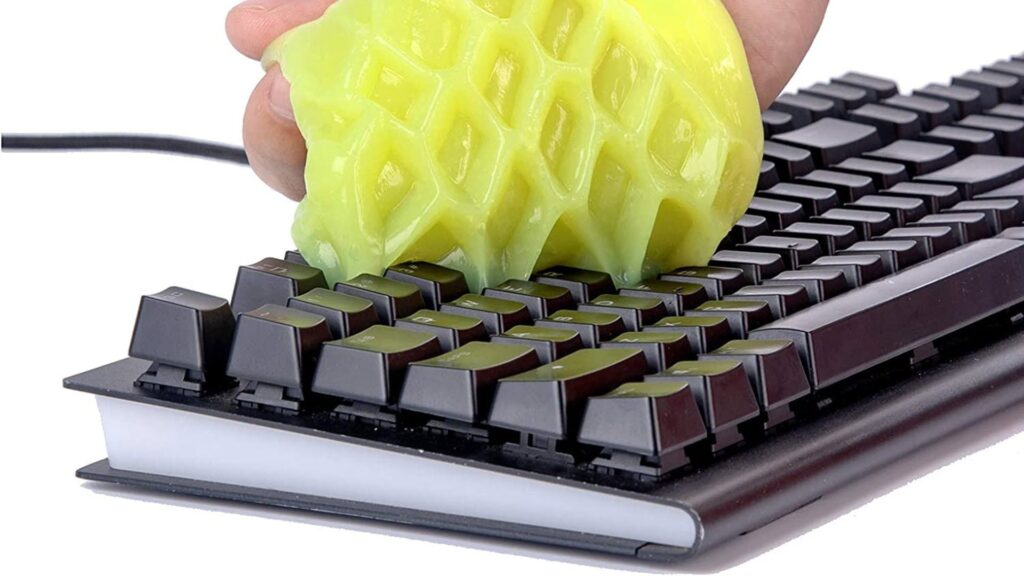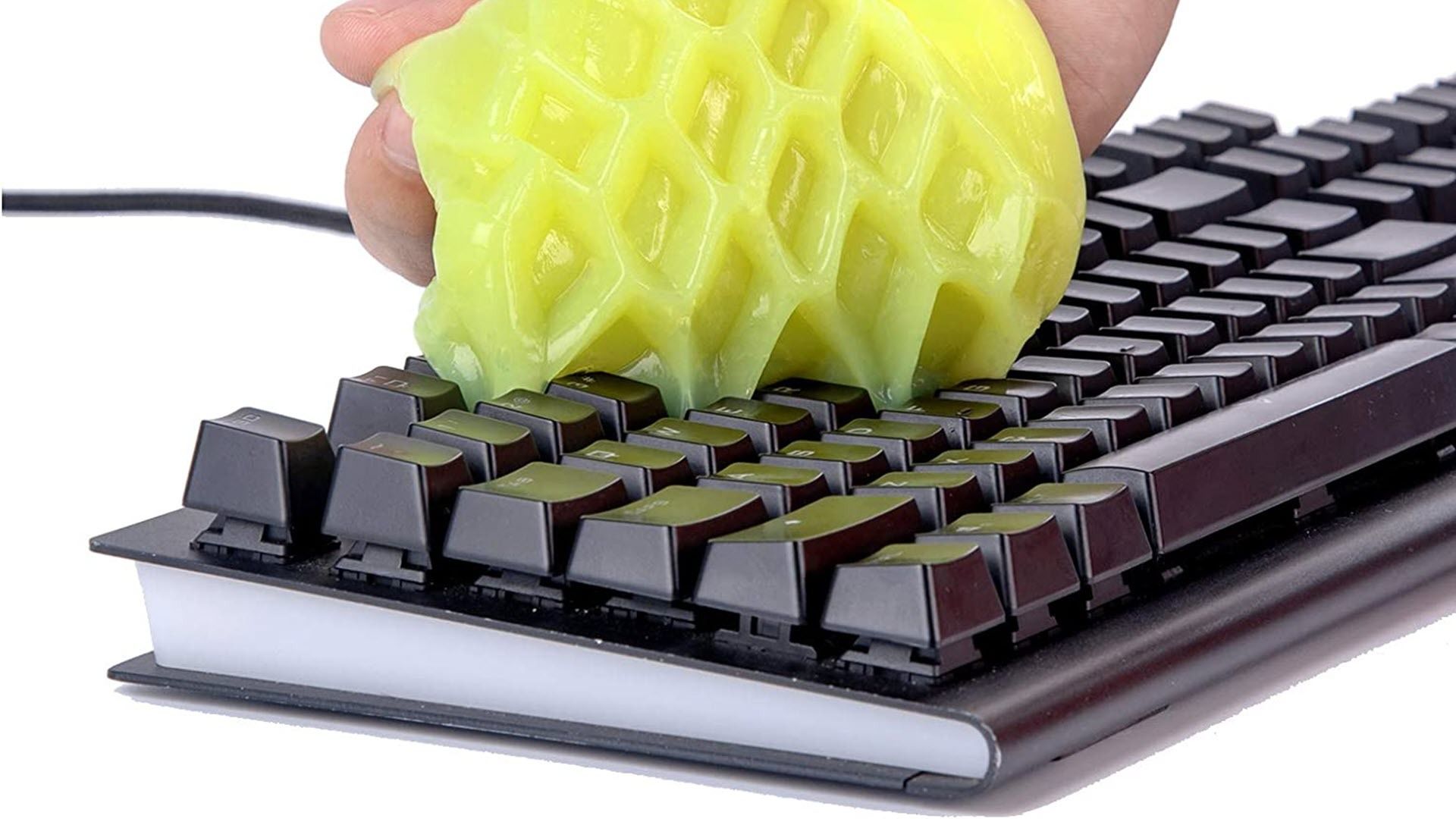
The Best Ways to Clean Your Keyboard: A Comprehensive Guide
In today’s digital age, our keyboards are indispensable tools, integral to both work and leisure. From crafting important emails to engaging in gaming sessions, these devices endure constant use. Consequently, they become breeding grounds for dust, crumbs, and even germs. Learning the best ways to clean keyboard is therefore not just about aesthetics; it’s about hygiene and prolonging the lifespan of your valuable equipment. This comprehensive guide will walk you through the most effective methods for cleaning your keyboard, ensuring it remains both functional and sanitary.
Why Cleaning Your Keyboard Matters
Before delving into the cleaning process, it’s crucial to understand why regular keyboard maintenance is essential. Keyboards, due to their intricate design and frequent handling, accumulate a surprising amount of debris. This can include:
- Dust and dirt: Airborne particles settle on and within the keyboard.
- Food crumbs: Snacking while working or gaming inevitably leads to crumbs finding their way into the crevices.
- Germs and bacteria: Our hands are carriers of countless microorganisms, which transfer to the keyboard with every touch.
- Oils and skin cells: Natural oils and dead skin cells also contribute to the grime buildup.
Neglecting keyboard cleaning can lead to several problems:
- Reduced keyboard performance: Accumulated debris can interfere with key responsiveness, making typing difficult.
- Spread of germs: A dirty keyboard can harbor harmful bacteria, potentially leading to illness.
- Damage to the keyboard: Over time, accumulated debris can corrode internal components, shortening the keyboard’s lifespan.
- Unpleasant aesthetics: A dirty keyboard is simply unappealing and can detract from a clean workspace.
Therefore, adopting a regular cleaning routine is vital for maintaining a healthy and functional workspace. Understanding the best ways to clean keyboard ensures you’re not only removing visible dirt but also minimizing the risk of bacterial contamination.
Essential Tools for Keyboard Cleaning
Before embarking on your cleaning journey, gather the necessary tools. Having the right equipment will make the process more efficient and effective. Here’s a list of essential items:
- Compressed air: This is invaluable for blasting away loose dust and debris from between the keys.
- Microfiber cloths: These are gentle and effective for wiping down surfaces without scratching.
- Isopropyl alcohol (70% or higher): A safe and effective disinfectant for killing germs and removing stubborn stains.
- Cotton swabs: Useful for cleaning hard-to-reach areas and applying cleaning solutions precisely.
- Keycap puller (optional): This tool allows you to safely remove keycaps for thorough cleaning underneath.
- Small brush (soft-bristled): Helps to dislodge debris from tight spaces. An old toothbrush works well.
- Vacuum cleaner with a brush attachment (optional): For larger debris removal, a vacuum can be helpful.
Having these tools readily available will streamline the cleaning process and ensure you achieve the best possible results. Remember to always power off and unplug your keyboard before commencing any cleaning procedure.
Step-by-Step Guide: How to Clean Your Keyboard
Now that you have your tools assembled, let’s move on to the cleaning process. Here’s a step-by-step guide to help you clean your keyboard effectively:
Step 1: Unplug and Prepare
The first and most important step is to unplug your keyboard from your computer or device. This prevents accidental key presses or electrical damage during the cleaning process. If you have a wireless keyboard, turn it off and remove the batteries. This is a crucial safety precaution.
Step 2: Remove Loose Debris
Turn your keyboard upside down and gently shake it to dislodge any loose crumbs, dust, or other debris. You can also use compressed air to blow out particles from between the keys. Hold the can of compressed air upright and use short bursts to avoid damaging the keyboard. Focus on the spaces between the keys and around the edges.
Step 3: Clean the Keycaps
For a more thorough cleaning, consider removing the keycaps. Use a keycap puller to gently lift each keycap off the keyboard. If you don’t have a keycap puller, you can use a small, flat screwdriver, but be extremely careful not to scratch the keycaps or the keyboard. Once the keycaps are removed, soak them in warm, soapy water for about 15-20 minutes. Rinse them thoroughly and allow them to air dry completely before reattaching them.
Step 4: Clean the Keyboard Surface
While the keycaps are drying, clean the keyboard surface itself. Dampen a microfiber cloth with isopropyl alcohol (70% or higher) and gently wipe down the entire surface of the keyboard, paying particular attention to areas around the keys and any visible stains. Avoid spraying the alcohol directly onto the keyboard, as this could damage the internal components. Use cotton swabs dipped in alcohol to clean hard-to-reach areas, such as the spaces between the keys and the edges of the keyboard.
Step 5: Dry and Reassemble
Once the keycaps are completely dry, carefully reattach them to the keyboard. Ensure that each keycap is properly aligned and securely in place. Use the correct layout for your keyboard to avoid any confusion. After reassembling the keycaps, give the keyboard a final wipe down with a clean, dry microfiber cloth to remove any remaining moisture or fingerprints. Allow the keyboard to air dry completely before plugging it back in or turning it on.
Specific Keyboard Types and Cleaning Considerations
While the general cleaning process remains the same, different keyboard types may require specific considerations:
Mechanical Keyboards
Mechanical keyboards are known for their durability and customizable keycaps. When cleaning a mechanical keyboard, it’s especially important to remove the keycaps for a thorough cleaning. Use a keycap puller to avoid damaging the switches. Be gentle when reattaching the keycaps to ensure they are properly aligned and seated. [See also: Best Mechanical Keyboards for Gaming]
Laptop Keyboards
Laptop keyboards are more delicate than desktop keyboards. Avoid using excessive moisture when cleaning a laptop keyboard, as this could damage the internal components. Use a slightly dampened microfiber cloth to wipe down the keys and avoid spraying any liquids directly onto the keyboard. Be particularly careful when cleaning around the edges of the keys to prevent liquid from seeping into the laptop. [See also: How to Protect Your Laptop from Spills]
Wireless Keyboards
Wireless keyboards require the same cleaning process as wired keyboards, but it’s important to remove the batteries before cleaning to prevent accidental activation or electrical damage. Be sure to dry the battery compartment thoroughly before reinserting the batteries. Also, be mindful of the wireless receiver. Keep it clean and away from potential obstructions for optimal connectivity.
Preventative Measures for a Cleaner Keyboard
Prevention is always better than cure. Here are some preventative measures to keep your keyboard cleaner for longer:
- Avoid eating or drinking near your keyboard: This will minimize the risk of crumbs and spills.
- Wash your hands regularly: Clean hands mean fewer germs and oils transferred to your keyboard.
- Use a keyboard cover: A keyboard cover can protect your keyboard from dust, spills, and other debris.
- Clean your keyboard regularly: A quick wipe down once a week can prevent buildup of dirt and grime.
Troubleshooting Common Keyboard Cleaning Issues
Even with the best methods, you might encounter some challenges during the cleaning process. Here are some common issues and how to troubleshoot them:
- Sticky keys: If your keys are still sticky after cleaning, it may be due to residue from sugary drinks or other substances. Try soaking the keycaps in warm, soapy water for a longer period or using a specialized keyboard cleaning solution.
- Keycaps not fitting properly: Ensure that you are using the correct layout for your keyboard and that each keycap is properly aligned. If a keycap is damaged, you may need to replace it.
- Keyboard not working after cleaning: Double-check that the keyboard is properly plugged in or that the batteries are fresh. If the keyboard still doesn’t work, it may have been damaged during the cleaning process. Consider contacting a professional for repair or replacement.
The Importance of Regular Keyboard Cleaning
In conclusion, mastering the best ways to clean keyboard is an essential skill for anyone who uses a computer regularly. Not only does it improve the aesthetics of your workspace, but it also promotes hygiene and extends the lifespan of your keyboard. By following the steps outlined in this guide and adopting preventative measures, you can keep your keyboard clean, functional, and germ-free. Regular cleaning ensures that your keyboard remains a reliable tool for years to come. Remember to be gentle, thorough, and patient, and you’ll be rewarded with a cleaner, healthier, and more enjoyable computing experience. So, take the time to clean your keyboard today – your fingers (and your computer) will thank you for it!

